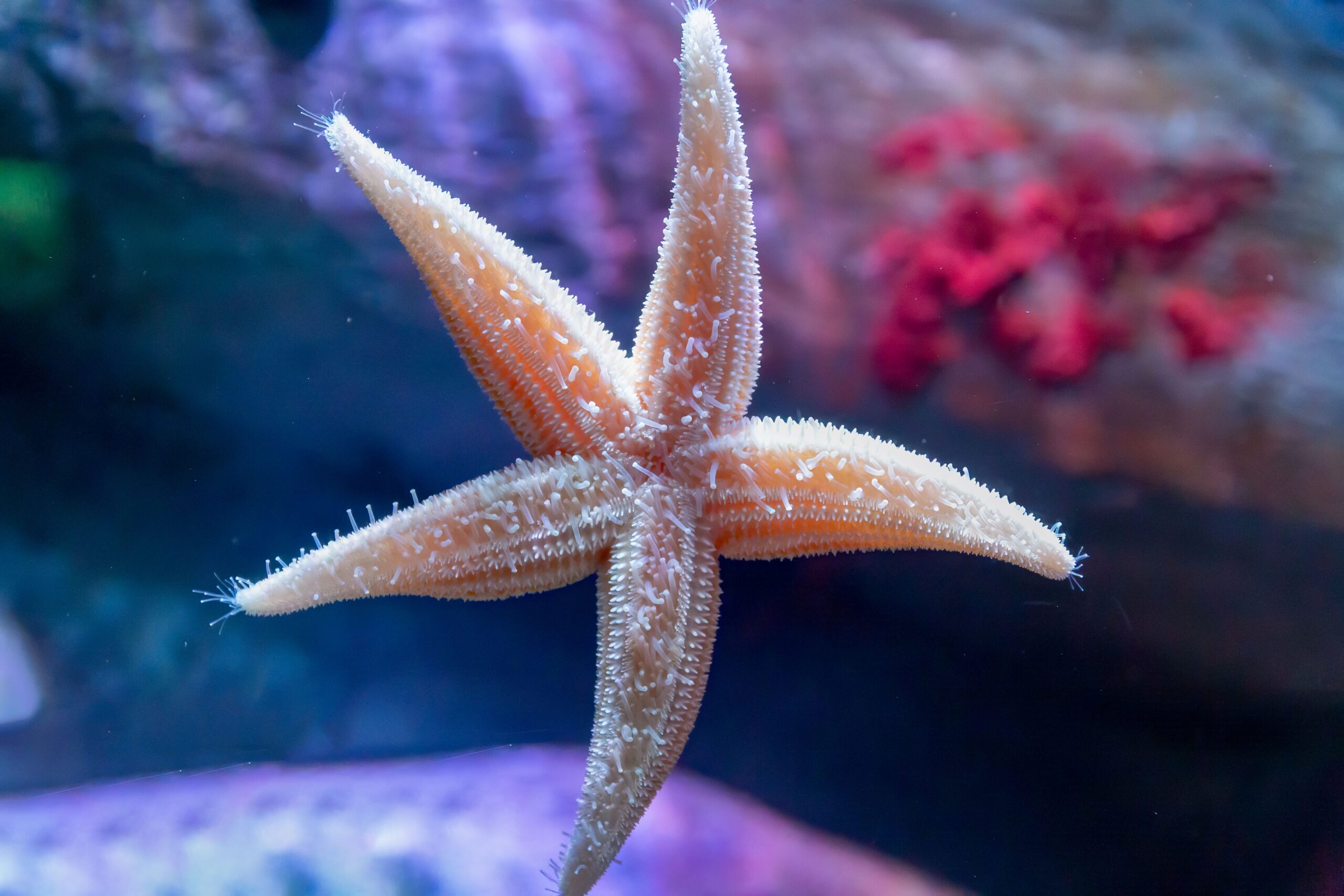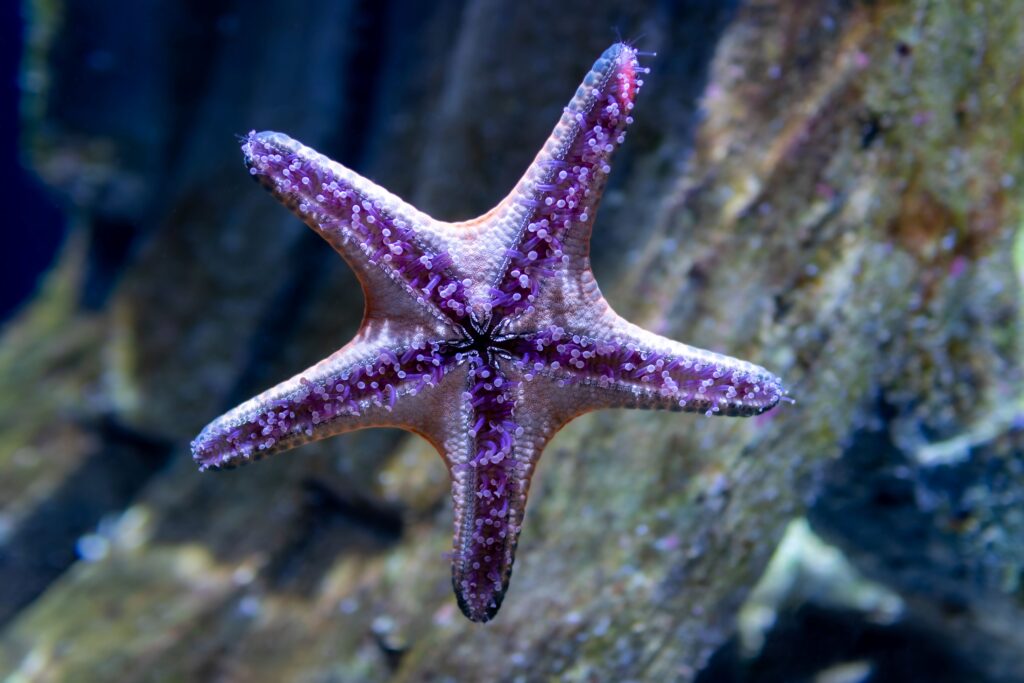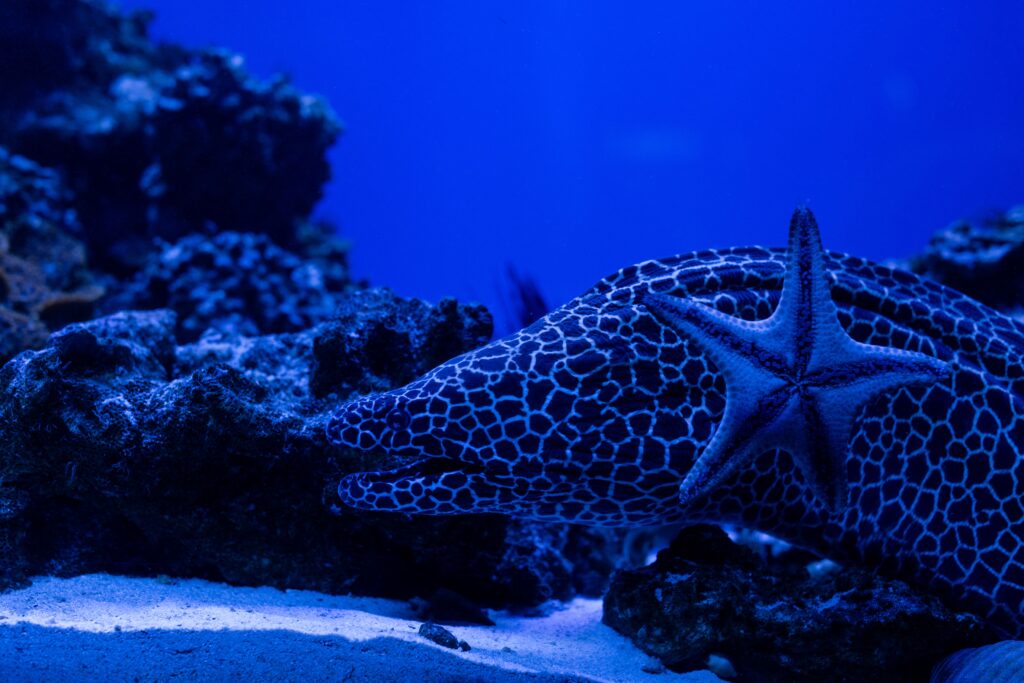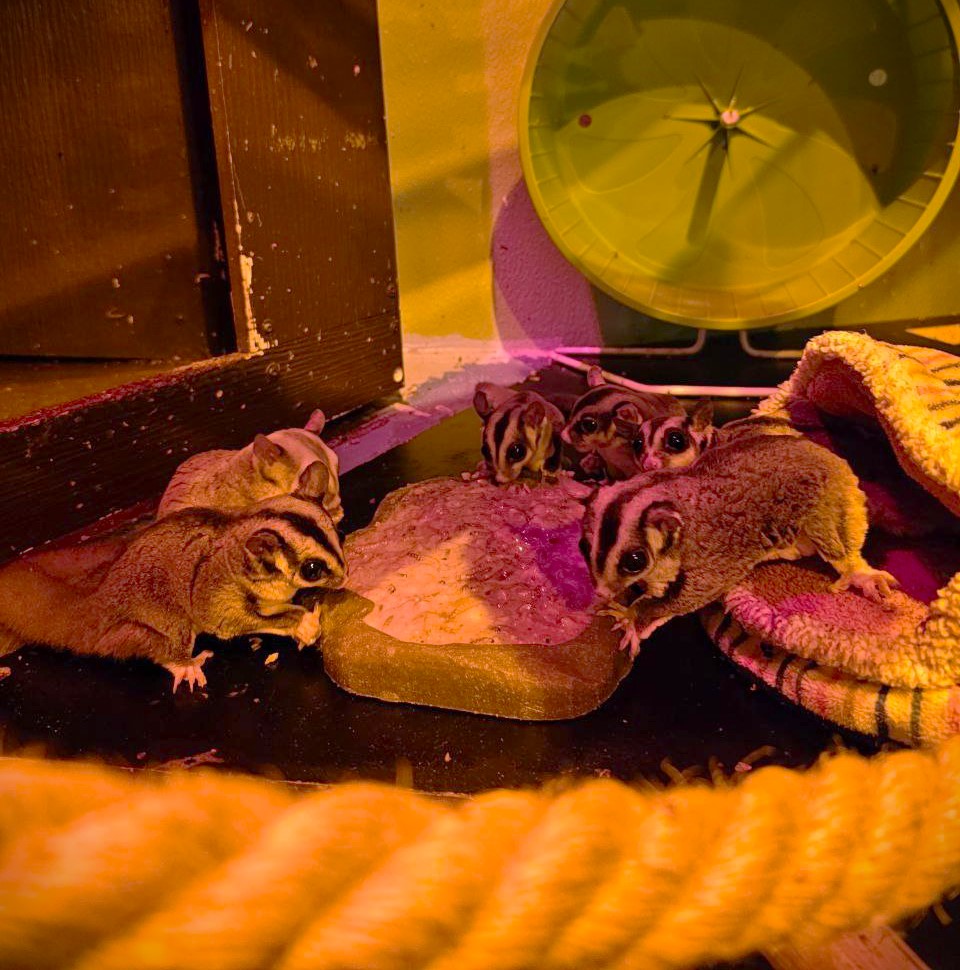Seeing Stars: SeaQuest Guide to Sea Stars
Share it on:

From the vastness of the open ocean to the intricate ecosystems of tidal pools, the sea star is a marine wonder that captivates the curiosity of students and marine biologists alike. If you’re enthralled by the celestial beauty of these creatures and eager to understand more about their role in our oceans, you’ve come to the right place. In this guide, we’ll explore the world of sea stars and uncover the essentials of these fascinating beings, offering insights that are as rich and diverse as the marine life they represent.
What Are Sea Stars?
Sea stars, often known as starfish, are echinoderms, which means they are related to sea urchins and sand dollars. Similar to crustaceans (crabs and lobster), Sea Stars are actually invertebrates. But unlike crustaceans, Sea stars do not have a shell!
Although the name starfish implies they are a fish, they are far from that. Sea stars are characterized by their star-shaped body structure, which usually comprises five arms radiating from a central disk, although some species can have many more.
These arms are more than just for show; they hold thousands of tube feet that help Sea stars move along the sea floor, clinging to rocks, and pry open prey like mollusks. Recent research has shown that these arms have a natural glue that allows Sea stars to stick to rocks and coral so that the tides do not wash them away! Sea stars are truly a wonder of the ocean, displaying a range of fascinating abilities, including regenerating lost limbs.
What Species Is a Sea Star?
The term “sea star” encompasses multiple species in the class Asteroidea. With an estimated 1,500 species worldwide, they vary vastly in size, color, habitat, and diet. Some of the well-known species include the Common Sea Star (Asterias rubens), the Sunflower Sea Star (Pycnopodia helianthoides), and the Royal Sea Star (Astropecten articulates).
Did You Know? Sea stars actually have no brain and no blood? They use filtered seawater to pump nutrients through their nervous system. This is why they can’t survive in freshwater. Sea stars also live long lives compared to most sea creatures. The average lifespan is 35 years!
What Do Sea Stars Eat?
Sea stars have quite an eclectic menu, ranging from bivalves and snails to injured fish and coral polyps. Despite their slow movement, they are fascinatingly effective predators. One of their most unique hunting traits is their ability to pry open the shells of clams or oysters, and their stomachs can be extended outward to digest food externally.
Where Do Sea Stars Live?
Sea stars have remarkably adapted to live in various marine environments. They can be found in shallow tidal pools, coral reefs, kelp forests, and seagrass meadows, as well as in the deep sea. Their habitats span across the world’s oceans, from the equatorial Pacific to the frigid Arctic.
Are Sea Stars Endangered?
While not all sea stars are endangered, some species have been experiencing significant population declines. Factors such as climate change, ocean acidification, pollution, and a disease known as Sea star wasting syndrome have taken a toll on some populations. In particular, the Sunflower Sea Star has been classified as critically endangered, primarily due to the wasting syndrome outbreaks.
Preserving these unique creatures is crucial, considering their role in maintaining the balance of marine ecosystems. They often act as keystone species, meaning their presence is vital for the health and stability of the environments they inhabit.
Sea stars are more than just picturesque animals that dot our oceans; they are complex creatures with a vital role in the aquatic food web. Students and aspiring marine biologists should regard them as symbols of resilience and adaptability, reminding us of the interconnectedness of life below the waves. Whether you are a casual enthusiast or a dedicated scientist, understanding and protecting Sea stars is a step towards safeguarding the biodiversity of our oceans.
SeaQuest is committed to protecting our world’s oceans and endangered animals. We focus on how to be proactive in finding solutions. To learn more about how you can help SeaQuest with this cause, book your visit today at any of the following locations: Utah, Las Vegas, Dallas-Fort Worth, Sacramento, Minneapolis, Lynchburg, and New Jersey.






